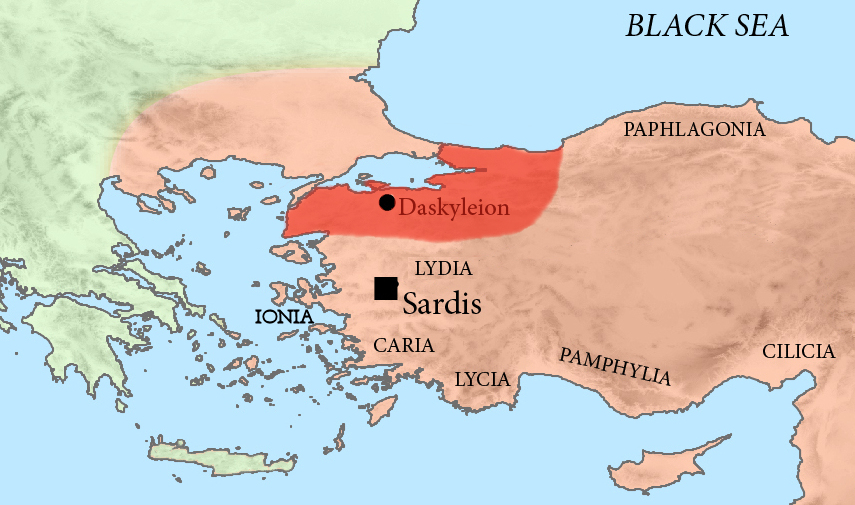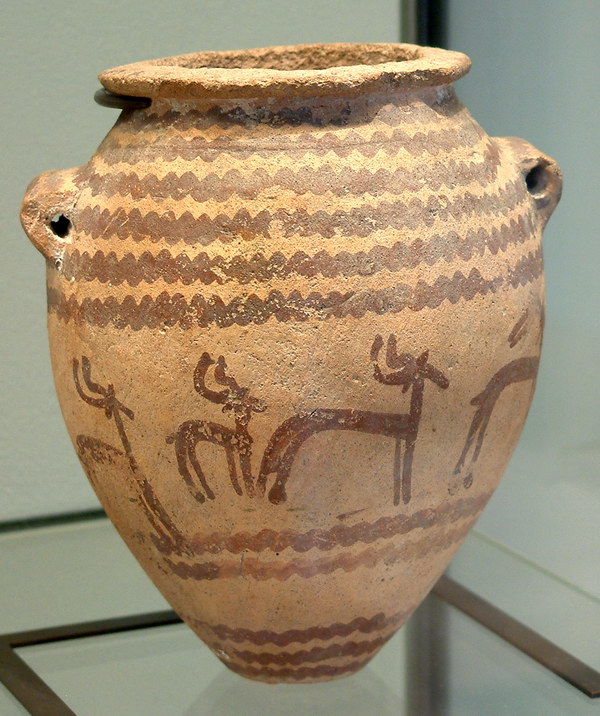|
Pherendates
Pherendates ( peo, *Farnadātaʰ; grc, Φερενδάτης ) was an Achaemenid satrap of ancient Egypt in the early 5th century BCE, at the time of the Achaemenid 27th Dynasty of Egypt. Career A son of Megabazus, and an army commander under king Darius I, Pherendates is mainly attested from three letters written in Egyptian Demotic. He replaced the satrap Aryandes who was deposed by Darius around 496 BCE; although the exact accession date of Pherendates is unknown. Pherendates was definitely the satrap in 492 BCE. at the ''''. In the aforementioned letters, certain priests of the local temple of |
Achaemenes (satrap)
Achaemenes ( peo, 𐏃𐎧𐎠𐎶𐎴𐎡𐏁 ;M. A. Dandamayev, “Achaemenes,” Encyclopædia Iranica, I/4, p. 414; an updated version is available online at http://www.iranicaonline.org/articles/achaemenes-greek grc, Ἀχαιμένης , also incorrectly called Achaemenides by Ctesias) was an Achaemenid general and satrap of ancient Egypt during the early 5th century BC, at the time of the 27th Dynasty of Egypt. Career A son of king Darius I by his queen Atossa and thus a full brother of Xerxes I, Achaemenes was appointed satrap of Egypt some time between 486 and 484 BC, shortly after Xerxes' accession. At the time, Egypt was revolting against Achaemenid rule, and it appears likely that the previous satrap Pherendates lost his life in the turmoil. The rebellion, possibly led by a self-proclaimed pharaoh named Psammetichus IV, was eventually quelled by Achaemenes around 484 BC. After the victory, Achaemenes adopted a more repressive policy in order to discourage new re ... [...More Info...] [...Related Items...] OR: [Wikipedia] [Google] [Baidu] |
Aryandes
Aryandes (Old Iranian: ''Aryavanda'' or ''Arvanta'', Ancient Greek: ''Ἀρυάνδης'') was the first Achaemenid satrap of ancient Egypt between 525 BCE and 496 BCE, during the early 27th Dynasty of Egypt. Career When king Cambyses II defeated pharaoh Psamtik III at the battle of Pelusium (525 BCE), Egypt became a satrapy of the Achaemenid empire, and Aryandes was appointed satrap shortly after. In 522 BCE, Aryandes was overthrown in a revolt against the Achaemenid rule led by a native Egyptian pharaoh, Petubastis III. The rebellion was personally quelled by the new king Darius I during his expedition to Egypt in 518 BCE, and Aryandes was reinstated. The satrap then attempted to subjugate Libya with poor results. Around 496 BCE, Aryandes fell out of favour with Darius I and was deposed and replaced by Pherendates. The reason for this decision is unknown, with Herodotus and later Polyaenus claiming that the satrap started minting his own silver coinage, calling it ''aryandic' ... [...More Info...] [...Related Items...] OR: [Wikipedia] [Google] [Baidu] |
Megabazus
Megabazus (Old Persian: ''Bagavazdā'' or ''Bagabāzu'', grc, Μεγαβάζος), son of Megabates, was a highly regarded Persian general under Darius, to whom he was a first-degree cousin. Most of the information about Megabazus comes from '' The Histories'' by Herodotus. Scythian campaign (513 BC) Megabazus led the army of the Persian King Darius I in 513 BC during his European Scythian campaign. After this had to be discontinued without result, Megabazos was left as commander-in-chief of an 80,000-man army in Europe, with the mission of subjugating the Greek cities on the Hellespont. The Persian troops first subjugated gold-rich Thrace after capturing Perinthos and the coastal Greek cities, and then defeated the powerful Paeonians, many of whom he deported to Phrygia. Subjugation of Macedon Finally, Megabazus sent envoys to Amyntas I, king of Macedon, demanding acceptance of Persian domination, which the king accepted. Megabazus received the present of "Earth and Wate ... [...More Info...] [...Related Items...] OR: [Wikipedia] [Google] [Baidu] |
Twenty-seventh Dynasty Of Egypt
The Twenty-seventh Dynasty of Egypt (notated Dynasty XXVII, alternatively 27th Dynasty or Dynasty 27), also known as the First Egyptian Satrapy (), was effectively a province (Satrapy) of the Achaemenid Persian Empire between 525 BC and 404 BC. It was founded by Cambyses II, the King of Persia, after the Battle of Pelusium (525 BC) and the Achaemenid conquest of Egypt, and his subsequent crowning as Pharaoh of Egypt. It was disestablished upon the rebellion and crowning of Amyrtaeus as Pharaoh. A second period of Achaemenid rule in Egypt occurred under the Thirty-first Dynasty of Egypt (343–332 BC). History The last pharaoh of the 26th Dynasty, Psamtik III, was defeated by Cambyses II at the battle of Pelusium in the eastern Nile delta in May of 525 BC. Cambyses was crowned Pharaoh of Egypt in the summer of that year at the latest, beginning the first period of Persian rule over Egypt (known as the 27th Dynasty). Egypt was then joined with Cyprus and Phoe ... [...More Info...] [...Related Items...] OR: [Wikipedia] [Google] [Baidu] |
Khnum
Khnum or also romanised Khnemu (; egy, 𓎸𓅱𓀭 ẖnmw, grc-koi, Χνοῦβις) was one of the earliest-known Egyptian deities, originally the god of the source of the Nile. Since the annual flooding of the Nile brought with it silt and clay, and its water brought life to its surroundings, he was thought to be the creator of the bodies of human children, which he made at a potter's wheel, from clay, and placed in their mothers' wombs. He was later described as having moulded the other deities, and he had the titles "Divine Potter" and "Lord of created things from himself". General information The worship of Khnum centered on two principal riverside sites, Elephantine and Esna, which were regarded as sacred sites. At Elephantine, he was worshipped alongside Satis and Anuket. At Esna, he was worshipped alongside Menhit, Nebtu, Neith and Heka. Khnum was regarded as the guardian of the source of the Nile River. His significance led to early theophoric names of him, for c ... [...More Info...] [...Related Items...] OR: [Wikipedia] [Google] [Baidu] |
5th-century BC Iranian People
The 5th century is the time period from 401 ( CDI) through 500 ( D) ''Anno Domini'' (AD) or Common Era (CE) in the Julian calendar. The 5th century is noted for being a period of migration and political instability throughout Eurasia. It saw the collapse of the Western Roman Empire, which came to an end in 476 AD. This empire had been ruled by a succession of weak emperors, with the real political might being increasingly concentrated among military leaders. Internal instability allowed a Visigoth army to reach and ransack Rome in 410. Some recovery took place during the following decades, but the Western Empire received another serious blow when a second foreign group, the Vandals, occupied Carthage, capital of an extremely important province in Africa. Attempts to retake the province were interrupted by the invasion of the Huns under Attila. After Attila's defeat, both Eastern and Western empires joined forces for a final assault on Vandal North Africa, but this campaign was a s ... [...More Info...] [...Related Items...] OR: [Wikipedia] [Google] [Baidu] |
Year Of Birth Unknown
A year or annus is the orbital period of a planetary body, for example, the Earth, moving in its orbit around the Sun. Due to the Earth's axial tilt, the course of a year sees the passing of the seasons, marked by change in weather, the hours of daylight, and, consequently, vegetation and soil fertility. In temperate and subpolar regions around the planet, four seasons are generally recognized: spring, summer, autumn and winter. In tropical and subtropical regions, several geographical sectors do not present defined seasons; but in the seasonal tropics, the annual wet and dry seasons are recognized and tracked. A calendar year is an approximation of the number of days of the Earth's orbital period, as counted in a given calendar. The Gregorian calendar, or modern calendar, presents its calendar year to be either a common year of 365 days or a leap year of 366 days, as do the Julian calendars. For the Gregorian calendar, the average length of the calendar year ( ... [...More Info...] [...Related Items...] OR: [Wikipedia] [Google] [Baidu] |
Achaemenid Satraps Of Egypt
The Achaemenid Empire or Achaemenian Empire (; peo, 𐎧𐏁𐏂, , ), also called the First Persian Empire, was an ancient Iranian empire founded by Cyrus the Great in 550 BC. Based in Western Asia, it was contemporarily the largest empire in history, spanning a total of from the Balkans and Egypt in the west to Central Asia and the Indus Valley in the east. Around the 7th century BC, the region of Persis in the southwestern portion of the Iranian plateau was settled by the Persians. From Persis, Cyrus rose and defeated the Median Empire as well as Lydia and the Neo-Babylonian Empire, marking the formal establishment of a new imperial polity under the Achaemenid dynasty. In the modern era, the Achaemenid Empire has been recognized for its imposition of a successful model of centralized, bureaucratic administration; its multicultural policy; building complex infrastructure, such as road systems and an organized postal system; the use of official languages across it ... [...More Info...] [...Related Items...] OR: [Wikipedia] [Google] [Baidu] |
Satrap
A satrap () was a governor of the provinces of the ancient Median and Achaemenid Empires and in several of their successors, such as in the Sasanian Empire and the Hellenistic empires. The satrap served as viceroy to the king, though with considerable autonomy. The word came to suggest tyranny or ostentatious splendour, and in modern usage refers to any subordinate or local ruler, usually with unfavourable connotations of corruption. A satrapy is the territory governed by a satrap. Etymology The word is derived via Latin from Greek ''satrápes'' (), itself borrowed from an Old Iranian ''*khshathra-pa''. In Old Persian, which was the native language of the Achaemenids, it is recorded as ''khshathapavan'' (, literally "protector of the province"). The Median form is reconstructed as ''*khshathrapavan-''. It is cognate with Sanskrit ''kshetrapal'' (). The Biblical Hebrew form is ''aḥashdarpan'' , as found in . In the Parthian (language of the Arsacid Empire) and Middle Persia ... [...More Info...] [...Related Items...] OR: [Wikipedia] [Google] [Baidu] |
Ancient Egyptian History
The history of ancient Egypt spans the period from the early prehistoric settlements of the northern Nile valley to the Roman conquest of Egypt in 30 BC. The pharaonic period, the period in which Egypt was ruled by a pharaoh, is dated from the 32nd century BC, when Upper and Lower Egypt were unified, until the country fell under Macedonian rule in 332 BC. Chronology ;Note: For alternative 'revisions' to the chronology of Egypt, see Egyptian chronology. Egypt's history is split into several different periods according to the ruling dynasty of each pharaoh. The dating of events is still a subject of research. The conservative dates are not supported by any reliable absolute date for a span of about three millennia. The following is the list according to conventional Egyptian chronology. * Prehistoric Egypt (prior to 3100 BC) * Naqada III ("the protodynastic period", approximately 3100–3000 BC; sometimes referred to as "Dynasty 0") * Early Dynastic Period (First–Second Dyn ... [...More Info...] [...Related Items...] OR: [Wikipedia] [Google] [Baidu] |
Elephantine
Elephantine ( ; ; arz, جزيرة الفنتين; el, Ἐλεφαντίνη ''Elephantíne''; , ) is an island on the Nile, forming part of the city of Aswan in Upper Egypt. The archaeological sites on the island were inscribed on the UNESCO World Heritage List in 1979 along with other examples of Upper Egyptian architecture, as part of the " Nubian Monuments from Abu Simbel to Philae" (despite Elephantine being neither Nubian, nor between Abu Simbel and Philae). Geography Elephantine is from north to south, and is across at its widest point. The layout of this and other nearby islands in Aswan can be seen from west bank hillsides along the Nile. The island is located just downstream of the First Cataract, at the southern border of Upper Egypt with Lower Nubia. This region above is referred to as Upper Egypt because it is further up the Nile. The island may have received its name after its shape, which in aerial views is similar to that of an elephant tusk, or from the rou ... [...More Info...] [...Related Items...] OR: [Wikipedia] [Google] [Baidu] |
Demotic (Egyptian)
Demotic (from grc, δημοτικός ''dēmotikós'', 'popular') is the ancient Egyptian script derived from northern forms of hieratic used in the Nile Delta, and the stage of the Egyptian language written in this script, following Late Egyptian and preceding Coptic. The term was first used by the Greek historian Herodotus to distinguish it from hieratic and hieroglyphic scripts. By convention, the word "Demotic" is capitalized in order to distinguish it from demotic Greek. Script The Demotic script was referred to by the Egyptians as ', "document writing," which the second-century scholar Clement of Alexandria called , "letter-writing," while early Western scholars, notably Thomas Young, formerly referred to it as "Enchorial Egyptian." The script was used for more than a thousand years, and during that time a number of developmental stages occurred. It is written and read from right to left, while earlier hieroglyphs could be written from top to bottom, left to right, or ... [...More Info...] [...Related Items...] OR: [Wikipedia] [Google] [Baidu] |

%2C_N372.2.jpg)






